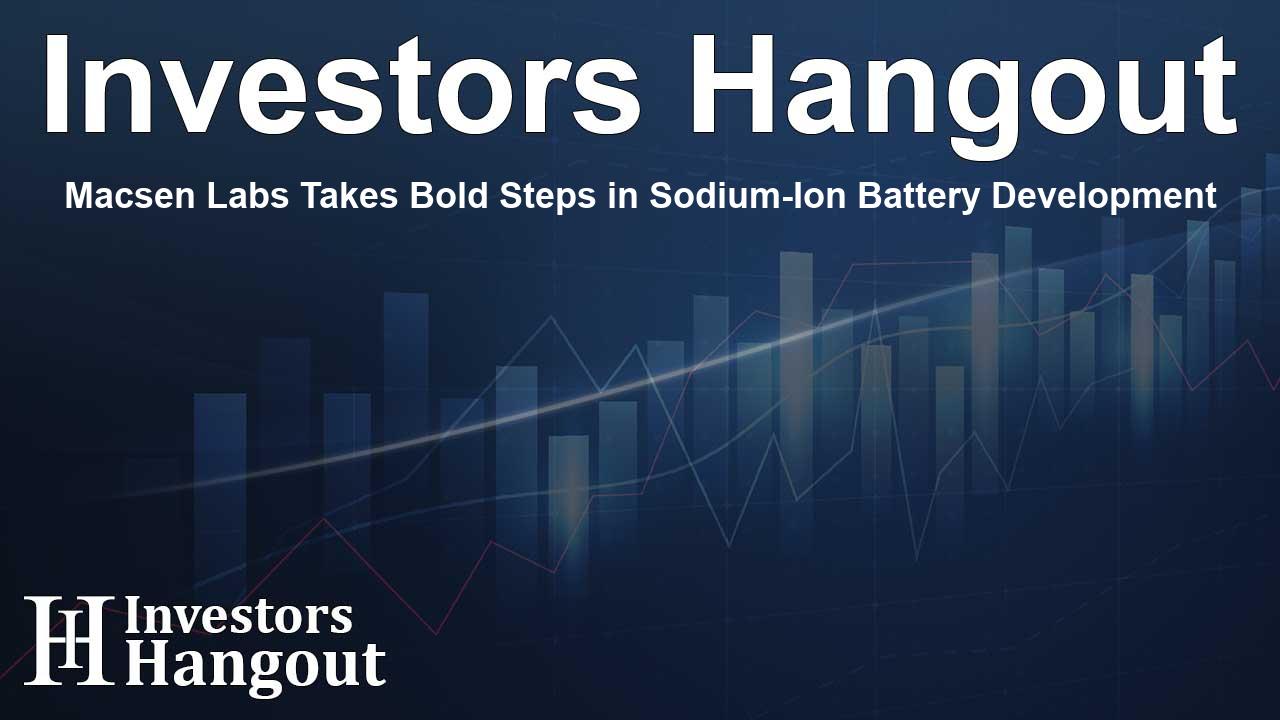Macsen Labs Takes Bold Steps in Sodium-Ion Battery Development

Macsen Labs’ Breakthrough in Sodium-Ion Battery Chemistry
Macsen Labs has embarked on an extraordinary journey in energy storage technology, achieving a significant breakthrough in sodium-ion battery chemistry. The company has successfully synthesized a high-performance cathode material known as Prussian White, marking a pivotal moment in battery research and development.
Innovative Research and Development
Founded in 1952 and known for its expertise in APIs, dyes, and specialty chemicals, Macsen Labs has recently turned its focus to sodium-ion batteries. During the research phase, the team discovered Prussian White while investigating Prussian Blue for pharmaceutical applications. According to Mr. Achal Agrawal, the CEO and lead researcher, this serendipitous discovery ignited a passion for energy storage innovations.
The initial prototype was created without sophisticated equipment, simply utilizing the existing chemistry laboratory setup. Agrawal recalls, "When that small cell lit up an LED bulb, we knew we had something special," highlighting the team's resourcefulness in establishing a dedicated electrochemistry lab shortly thereafter.
Advancements in Production and Technology
Today, Macsen boasts a fully equipped battery R&D facility that allows rapid prototyping and testing of battery cells. The investment in equipment like argon-filled gloveboxes and specialized fabrication stations has significantly accelerated the development timeline.
Currently, the company operates a pilot-scale facility for chemical synthesis, producing Prussian White at a kilogram scale. This successful synthesis has resulted in one of the highest quality variants recorded thus far in the industry.
The proprietary process developed by Macsen Labs has achieved an impressive energy density of over 150 mAh/g, rivaling that of traditional lithium iron phosphate (LFP) batteries. Agrawal emphasizes the advantages of using common materials such as sodium and iron, which are not only economical but also free from geopolitical supply constraints.
The Future of Sodium-Ion Batteries
As Macsen Labs cultivates the potential of sodium-ion batteries, there is a focus on applications beyond electric vehicles. The technology is anticipated to play a crucial role in large-scale energy storage solutions, particularly in renewable energy integration, making it an invaluable asset for India's energy transition.
Applications of Macsen’s Innovations
The efficient sodium-ion battery technology is being tailored to power battery energy storage systems for solar and wind energy. This versatility extends to household backup systems, short-range electric vehicles, and rural energy access projects. The design and manufacturing processes are being optimized to keep production costs low, promoting a broader adoption of this innovative technology.
Macsen Labs aims to lower manufacturing expenses further by incorporating aluminum as the cathode current collector, a strategic move that enhances cost-effectiveness compared to conventional copper alternatives.
Next Steps and Future Goals
To validate the performance of Prussian White in commercial applications, Macsen is in the process of setting up a pilot-scale production facility, with plans to operationalize it by early 2026. This initiative underlines the company's commitment to being at the forefront of energy storage innovation.
Agrawal expresses hope for a new energy ecosystem, asserting that sodium-ion batteries represent an opportunity for India to create a self-sufficient energy storage landscape. With this dedication to innovation, Macsen Labs is poised to influence the global energy storage market positively.
Frequently Asked Questions
What is the significance of Prussian White in battery technology?
Prussian White is a promising cathode material for sodium-ion batteries, offering high energy density and stability while being made from affordable, abundant materials.
How did Macsen Labs transition from pharmaceuticals to energy storage?
The transition occurred when the team discovered Prussian White during research on Prussian Blue for medical applications, leading to a new focus on battery technology.
What are the intended applications of the sodium-ion battery produced by Macsen Labs?
Macsen's sodium-ion batteries are designed for use in stationary energy storage systems, electric vehicles, and other various energy access solutions.
What competitive advantages does sodium-ion technology have?
Sodium-ion technology utilizes materials that are more abundant and less expensive than lithium-based alternatives, enhancing energy security and lowering costs.
When will Macsen's pilot-scale production facility be operational?
The facility is expected to be operational by early 2026, paving the way for larger-scale production of sodium-ion batteries.
About The Author
Contact Lucas Young privately here. Or send an email with ATTN: Lucas Young as the subject to contact@investorshangout.com.
About Investors Hangout
Investors Hangout is a leading online stock forum for financial discussion and learning, offering a wide range of free tools and resources. It draws in traders of all levels, who exchange market knowledge, investigate trading tactics, and keep an eye on industry developments in real time. Featuring financial articles, stock message boards, quotes, charts, company profiles, and live news updates. Through cooperative learning and a wealth of informational resources, it helps users from novices creating their first portfolios to experts honing their techniques. Join Investors Hangout today: https://investorshangout.com/
The content of this article is based on factual, publicly available information and does not represent legal, financial, or investment advice. Investors Hangout does not offer financial advice, and the author is not a licensed financial advisor. Consult a qualified advisor before making any financial or investment decisions based on this article. This article should not be considered advice to purchase, sell, or hold any securities or other investments. If any of the material provided here is inaccurate, please contact us for corrections.
